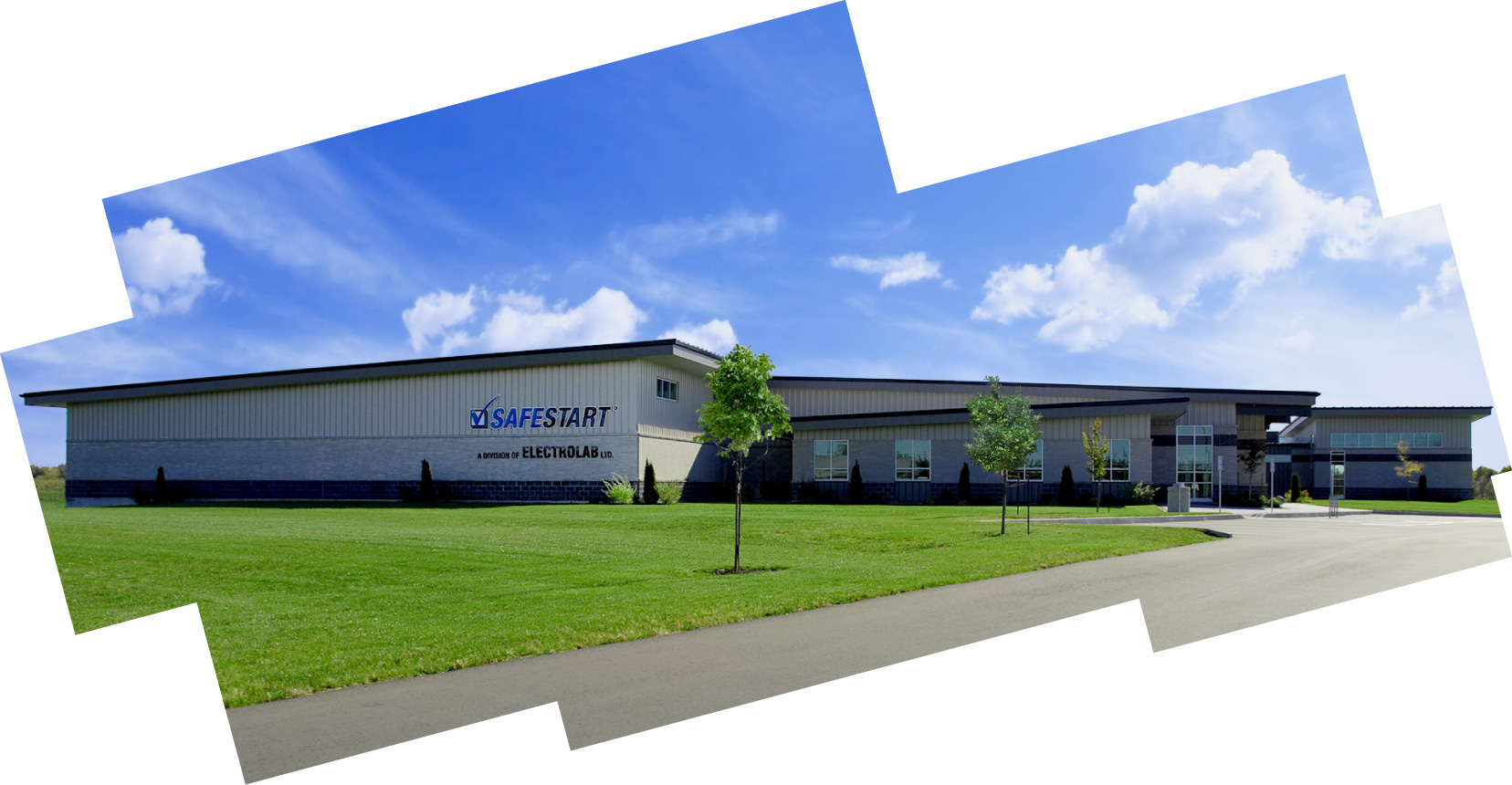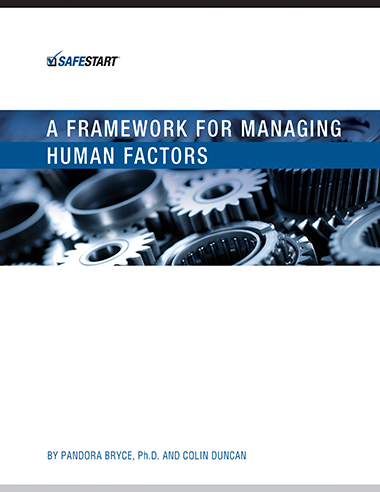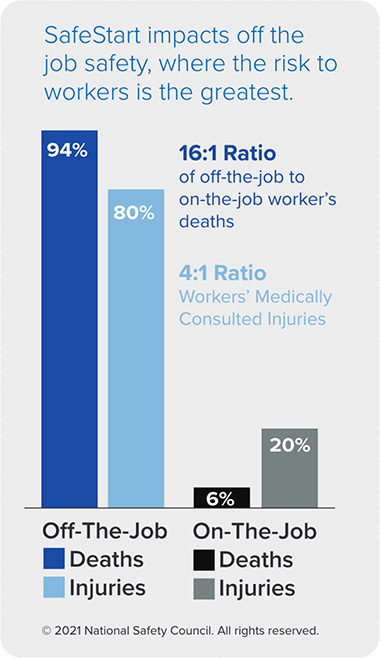Capabilities

For almost 25 years, SafeStart has been serving clients with solutions to increase personal safety awareness and skills. During this time we have become leaders in human factors management. We’ve taught millions of employees in more than 60 countries how to improve human performance—reducing preventable deaths and injuries both on and off the job. We’ve helped thousands of companies, large and small, reduce injuries, increase engagement and achieve sustainable culture improvement.
In the context of workplace safety, human factors management is an essential element to reducing incidents
 For organizations to achieve the full measure of success, senior executives must understand and effectively manage human factors in the workplace. Human factors appear in individuals as well as in larger systems and as such, they affect nearly every organizational output, from safety performance to productivity and company culture. Addressing them in a holistic way is a necessary precondition to peak performance.
For organizations to achieve the full measure of success, senior executives must understand and effectively manage human factors in the workplace. Human factors appear in individuals as well as in larger systems and as such, they affect nearly every organizational output, from safety performance to productivity and company culture. Addressing them in a holistic way is a necessary precondition to peak performance.
SafeStart Now
Frontline Training
Impact Now
 The concepts SafeStart employs fall into the broad category of safety awareness and personal 24/7 skills development. More specifically, it focuses on mitigating the human factors that are involved in the majority of incidents and injuries. Human factors are amplifiers of risk, and therefore increase the potential for serious injuries and fatalities (SIFs). The course provides specific critical error reduction techniques participants can use to reduce their risk of injury in any situation—at work, at home or on the road.
The concepts SafeStart employs fall into the broad category of safety awareness and personal 24/7 skills development. More specifically, it focuses on mitigating the human factors that are involved in the majority of incidents and injuries. Human factors are amplifiers of risk, and therefore increase the potential for serious injuries and fatalities (SIFs). The course provides specific critical error reduction techniques participants can use to reduce their risk of injury in any situation—at work, at home or on the road.
SafeStart Now uses advanced adult learning principles and the latest in instructional design to maximize the impact of every minute spent in safety training. SafeStart Now includes training on effective between-unit activities, for employees and supervisors, to achieve long-term sustainability.
Companies experience an average 50% reduction in injuries, along with increased near-miss reporting, and improved supervisory and peer-to-peer communication, cultivating meaningful feedback to achieve 24/7 safety success.
Key benefits
- Reduces injuries both on and off the job
- Provides usable skills that stick with employees 24/7
- Encourages personal responsibility and provides motivation for safety
- Relevant to all employees, their families and all workplaces
- Improves productivity and performance• Efficient and cost-effective
- Support throughout implementation (before, during and after)
- Can be delivered on-site or via virtual instructor-led training (VILT)
Impact 24/7
 Whatever you call it—total worker health, psychological safety, wellbeing, mindfulness or mental health—it’s imperative that organizations create a culture that supports their employees as human beings, with lives inside and outside the workplace. This necessitates a 24/7 approach. SafeStart provides this impact, teaching skills that employees can use to help them diminish the negative consequences of their own mental states like frustration or fatigue, and by creating a common language to help employees help each other.
Whatever you call it—total worker health, psychological safety, wellbeing, mindfulness or mental health—it’s imperative that organizations create a culture that supports their employees as human beings, with lives inside and outside the workplace. This necessitates a 24/7 approach. SafeStart provides this impact, teaching skills that employees can use to help them diminish the negative consequences of their own mental states like frustration or fatigue, and by creating a common language to help employees help each other.
SafeStart Now includes resources for employees to use outside of work, including family-friendly information pages at the back of each workbook, access to online resources such as printable activities for car trips and BooBoo Bandits videos and a home kit of SafeStart items to remind you how to stay safe. This builds engagement in safety at work, motivation for developing personal safety skills and additional opportunities to embed new knowledge by teaching others.
Impact That Lasts
SafeStart achieves a lasting impact. It’s not uncommon to hear about employees that were trained on the SafeStart concepts 20 years ago and are still using the language of SafeStart in their facility today.
Client sustainability resources and advice are woven into every aspect of SafeStart whether that’s from tips in our monthly newsletter or a consultant going on-site for a Human Factors Review.
SafeStart sustainability resources
- Steering committee training and impact measurement support
- Sustainability action items and training for supervisors and leaders
- eLearning options for distributed workers and for missed classes
- Posters, banners and tent cards; plus the right to use the SafeStart logo and concepts in your company communications and safety management system elements such as JSAs and near-miss reporting
- A client portal with downloadable resources such as a new hire orientation course and toolbox talk guides/videos
- Additional classroom training units for ongoing reinforcement and advanced learning, and to support the targeted needs of your employee population, such as ergonomics and performance
SafeTrack
Observation and Feedback
SafeTrack blends a traditional observation-based approach with important insights and proactive conversations to boost personal safety awareness. It addresses human factors and unintentional risk to get a stronger culture of safety and more functional interventions, one discussion at a time.
SafeLead
Supervisors/Frontline Managers
Advanced Safety and Communication Skills Coaching
 SafeLead addresses gaps in frontline leadership by providing advanced safety and enhanced communications skills based on human and systems factors. It has a unique implementation structure that targets the specific needs of each learner and organization. And by involving managers throughout the process it creates and sustains alignment, accountability and communication throughout the organization.
SafeLead addresses gaps in frontline leadership by providing advanced safety and enhanced communications skills based on human and systems factors. It has a unique implementation structure that targets the specific needs of each learner and organization. And by involving managers throughout the process it creates and sustains alignment, accountability and communication throughout the organization.
Best of all, the training is done outside of the classroom. Supervisors are educated in small groups or in a one-on-one setting, and a variety of activities and discussions reinforce their newly acquired knowledge to develop a common language and start building engagement at every level.
Key benefits
- Ensures understanding of how human factors connect to safety outcomes
- Improves leading indicator data (human factors in hazard identification, risk management and near-miss reporting)
- Develops effective communication skills (how to receive and give constructive feedback)
- Creates a no-blame culture
- Builds trust and engagement
- Inspires action
Advisory Services
Organization/Senior Leadership

SafeFactor
SafeFactor is a half-day training session (virtual or on-site) that provides an introduction to human factors for senior executives, production managers and organizational leaders. It uses an interactive workshop format to teach participants how to use the Human Factors Framework to identify system gaps and improve trends in safety, performance and culture, and concludes with action items for continual improvement.
Assessment & Diagnostics
SafeStart’s Human Factors Safety Assessment and Diagnostics service helps organizational leaders develop an evidence-based case for specific safety and performance strategies that will save lives, improve retention and provide the highest return on investment.
SafeStart’s proven diagnostic approach will eliminate the trial and error most companies go through to shed light on critical issues and the robust analytics process will effectively distill diagnostic results into practical information.
Human Factors Review
Human factors play a critical role in safety, quality and production. The inclusion of human factors elements within revised standards such as ISO 45001/45003, ANSI Z10 and NFPA 70E ensure that further emphasis will be expected within the safety profession in the coming months and years.
Our on-site human factors management review advisory service will assess how well human factors are being addressed in the workplace and provide specific recommendations to ensure operational excellence in the long term.
If you want to hear how SafeStart has not only reduced injuries but made improvements to overall engagement, culture and the bottom line, check out our client success stories
Our clients range from Fortune 500 companies to companies with less than 100 employees. These are their words, their stories, their achievements.
